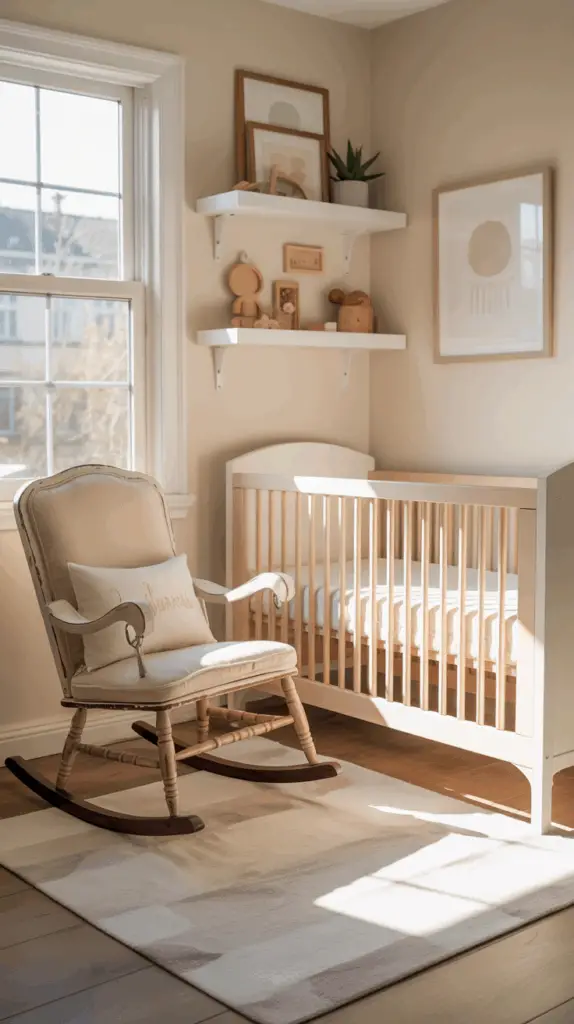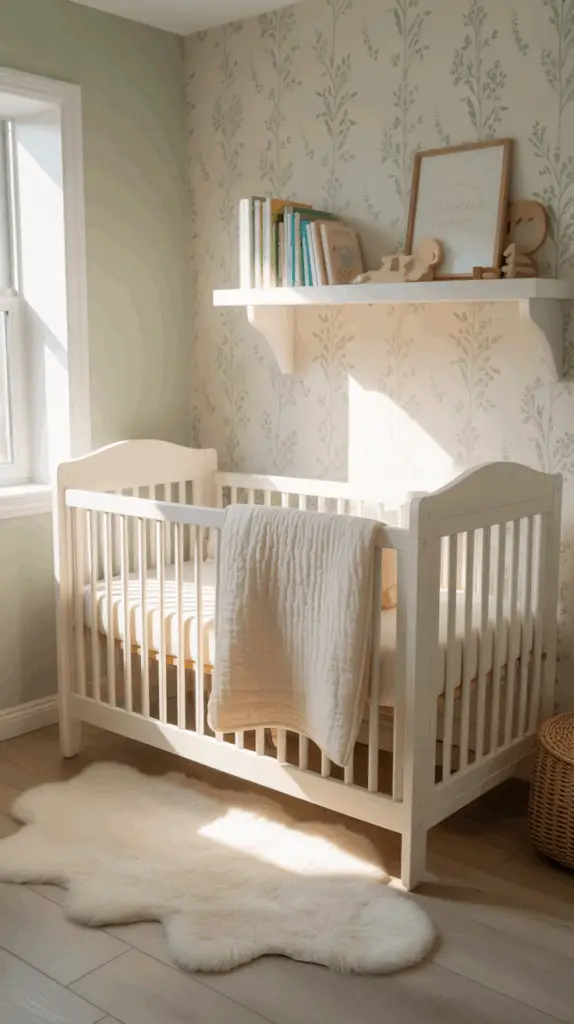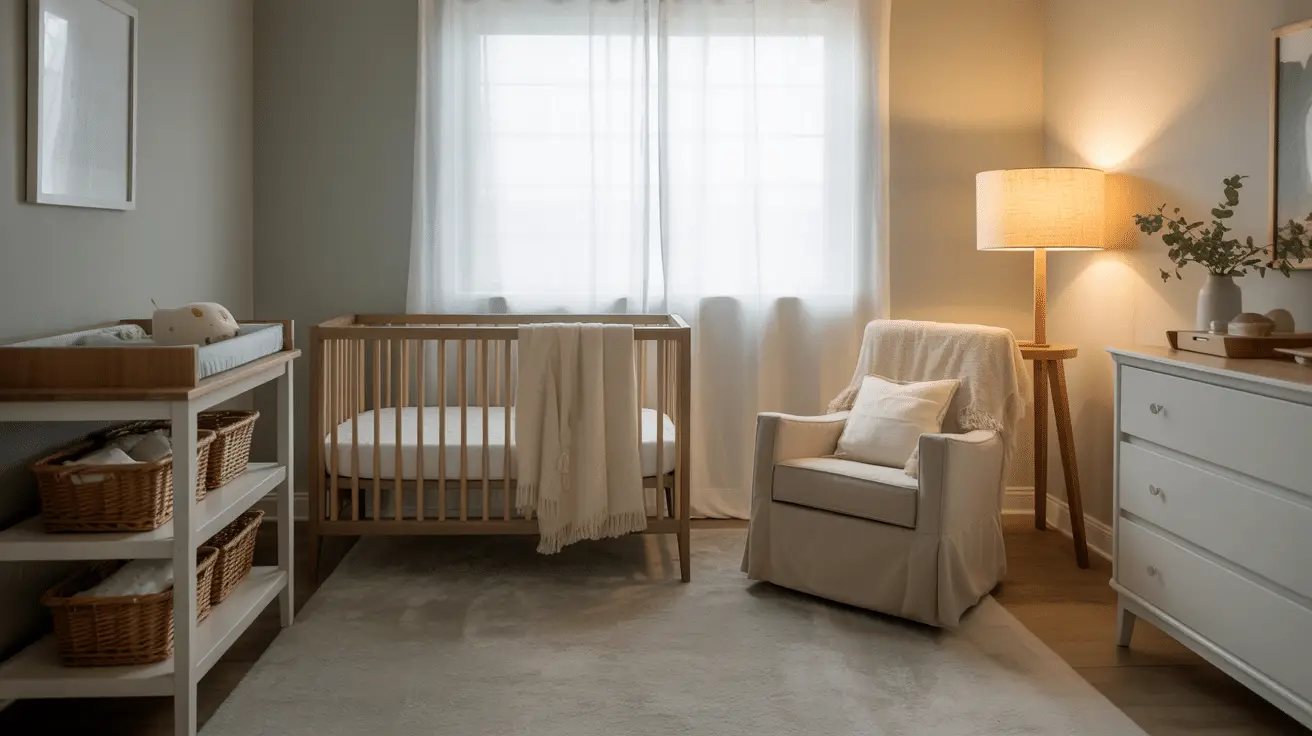7 Clever Nursery Layout Ideas to Maximize Form, Function, and Flow
Table of Contents
Create a Nursery That’s as Smart as It Is Stylish
Designing a nursery goes far beyond aesthetics—it’s about creating a space that supports daily routines, keeps baby safe, and offers comfort for everyone. With sleepless nights, constant changes, and round-the-clock care, the last thing any parent wants is a layout that makes life harder. That’s where thoughtful design really matters.
According to the National Sleep Foundation, the environment of a baby’s room—light, layout, and flow—can directly impact sleep patterns and caregiver stress levels. A well-planned nursery isn’t just pretty—it’s practical, efficient, and supports healthy habits from day one.
But where do you start when working with tight square footage, awkward windows, or trying to fit in everything you need without cluttering the space? This post explores seven clever nursery layout ideas designed to solve those very problems.
From multipurpose corners and mini nurseries to zoned layouts and statement walls that double as functional elements, you’ll learn how to make the most of your space. These ideas blend smart form with smooth function—so your nursery feels calm, organized, and custom-tailored to your family’s needs.
Start with Smart Zones: Defining Key Nursery Functions
Every well-designed nursery starts with identifying essential zones. These include sleeping, feeding, changing, playing, and storage. Defining these zones from the beginning ensures smooth flow and intuitive use—especially during those groggy middle-of-the-night moments.
Think of your nursery as having distinct areas, each with a purpose. Place the crib near a quieter corner of the room, ideally away from windows or drafty spots. The changing station works best close to the closet or dresser, where clothing and supplies are within reach. Create a feeding nook near a soft light source and include a side table for bottles, books, and water.
Zoning helps prevent overcrowding and makes your layout feel balanced. Even in a small room, you can use rugs, wall color, or furniture placement to create clear zones.
| Nursery Zone | Purpose | Placement Tips |
| Sleeping (Crib) | Rest & naps | Corner opposite door, away from windows |
| Changing | Diapers & clothing | Near dresser/closet for convenience |
| Feeding | Nursing, rocking | Near outlet and soft lighting |
| Play | Tummy time & toys | Open space or rug area |
| Storage | Clothes, supplies, toys | Vertical shelving or closet system |
Utilize Corner Space to Maximize Functionality
Corners are often the most underused part of any nursery, but with the right layout, they can become valuable real estate. Rather than letting them collect dust—or worse, clutter—use corner zones to add function without crowding the room.
For instance, place a rocking chair or glider in a corner to create a cozy feeding and bonding nook. Add a small shelf for nighttime essentials and soft lighting for those late-night feeds. Another option? Use a corner shelf system or vertical cubbies to hold baskets for diapers, blankets, or books.
In smaller nurseries, placing the crib diagonally in a corner can also save wall space and visually open up the room. Just be sure to allow enough clearance around the crib for safety and airflow.
| Corner Solution | Functional Use | Best Features |
| Rocking Chair Nook | Feeding + bonding | Adds comfort and purpose |
| Floating Shelves | Storage or display | Saves floor space |
| Corner Crib | Sleeping | Works in odd-shaped rooms |
| Ladder Shelf | Diapers, books, toys | Stylish and practical |

Double-Duty Furniture for Small or Shared Spaces
When designing a nursery in a small room—or sharing space with a home office or guest room—choosing furniture that serves more than one purpose is key. Think convertible cribs, dressers that double as changing tables, or ottomans with built-in storage.
Opt for a crib with drawers underneath to store extra bedding or baby clothes. Use a low-profile dresser as your changing station by placing a secured changing pad on top. Choose a glider with a matching storage ottoman that hides toys or swaddles.
You can also consider foldable or wall-mounted options. A fold-down changing table or a collapsible bassinet keeps the footprint minimal. In shared rooms, choose matching décor themes or color schemes to maintain cohesion while giving each area its own identity.
| Furniture Piece | Double Function | Ideal For |
| Dresser + Changing Table | Clothing + diapering | Everyday convenience |
| Convertible Crib | Grows into toddler bed | Long-term value |
| Storage Ottoman | Footrest + toy storage | Feeding and play areas |
| Wall Shelf with Hooks | Storage + hanging space | Vertical organization |
Create Visual Flow with Symmetry and Clear Sightlines
Good flow in a nursery isn’t just about where things are—it’s also about how the space feels. A room with clear sightlines and balanced symmetry feels more open, soothing, and organized, which is especially helpful in a space meant to calm and comfort.
Use symmetry to anchor your layout. Place matching storage baskets or artwork on either side of the crib to balance the room. If your nursery has windows, use curtains that frame the light without overwhelming the space. Make sure there’s a natural path through the room with no tight corners or tripping hazards.
Visual flow also depends on furniture height. Keep taller pieces like bookcases on one side of the room, and avoid blocking the line of sight with oversized pieces. Use low-profile rugs or floor cushions to add softness without clutter.
| Layout Tip | Visual Benefit | Design Note |
| Centered Crib | Creates focal point | Anchor with wall art or mobile |
| Matched Storage Bins | Keeps lines clean | Helps symmetry |
| Open Floor Space | Improves movement | Ideal for play and crawling |
| Balanced Heights | Reduces visual chaos | Distribute tall/short pieces evenly |
Embrace Vertical Storage for Style and Space-Saving
When square footage is limited, think vertically. Vertical storage helps reduce clutter while keeping everything within reach. It also offers opportunities to showcase beautiful design elements—whether it’s wall art, open shelving, or hanging organizers.
Wall-mounted bookshelves near a reading chair are both functional and charming. Floating ledges can hold baby books with cover art on display. Peg rails or mounted baskets help organize swaddles, burp cloths, or even baby clothes.
Tall wardrobes or open shelving units with labeled bins make it easy to find essentials quickly. Look for furniture with slim profiles to avoid crowding. Try styling your vertical storage with intentional layering: mix open baskets with neatly folded linens and a touch of decorative greenery or a framed print.
| Vertical Storage Idea | Best Use | Benefits |
| Floating Bookshelves | Display books/toys | Keeps floor clear |
| Hanging Baskets | Diapers, burp cloths | Flexible and cute |
| Peg Rails | Clothing or bags | Easy-access daily use |
| Tall Storage Unit | Mixed bins and decor | Efficient and stylish |
Design Around a Statement Wall for Balance and Interest
A statement wall can tie the entire nursery together and help guide the room’s layout. Whether it’s wallpaper, a painted mural, or a bold accent color, designing around a focal wall provides a natural visual anchor.
Many parents place the crib against the statement wall to center the design. This not only highlights your crib area but also helps balance the room with visual interest. Choose wallpaper with a subtle pattern or soft illustration to avoid overstimulation while still adding charm.
A gallery wall or textured wood paneling can also serve as a backdrop. Incorporate floating shelves or soft lighting to enhance the area’s function. Let the rest of the room remain neutral to give the statement wall space to shine.
| Statement Wall Type | Placement | Design Effect |
| Wallpaper | Behind crib | Adds depth and whimsy |
| Painted Accent | Bold wall color | Frames the focal area |
| Wood Paneling | Natural texture | Earthy and timeless |
| Mural | Custom or decal art | Personalized and memorable |

Conclusion: Design a Nursery That Grows with Your Family
A nursery is more than a room—it’s the setting for some of your family’s earliest memories. Designing it with intentional flow, multi-functional furniture, and visual balance helps create a space that is not only beautiful but deeply practical.
By using layout strategies that consider how you move, care, and connect in the space, your nursery becomes a true sanctuary. Whether you’re maximizing a small room or curating a dreamy design, these ideas support both function and style—setting the foundation for restful nights and joyful days.

